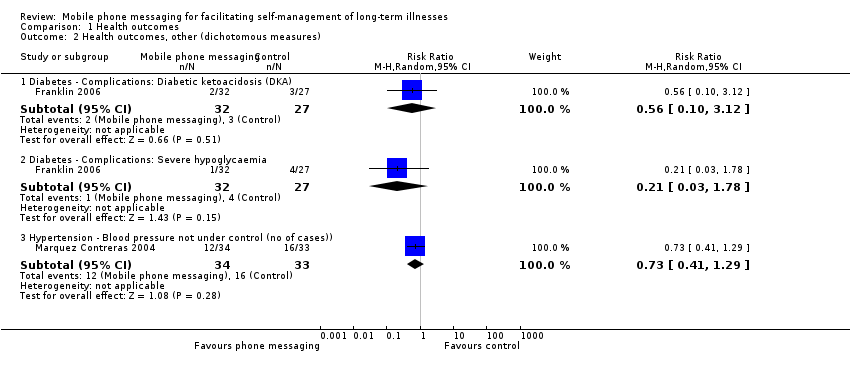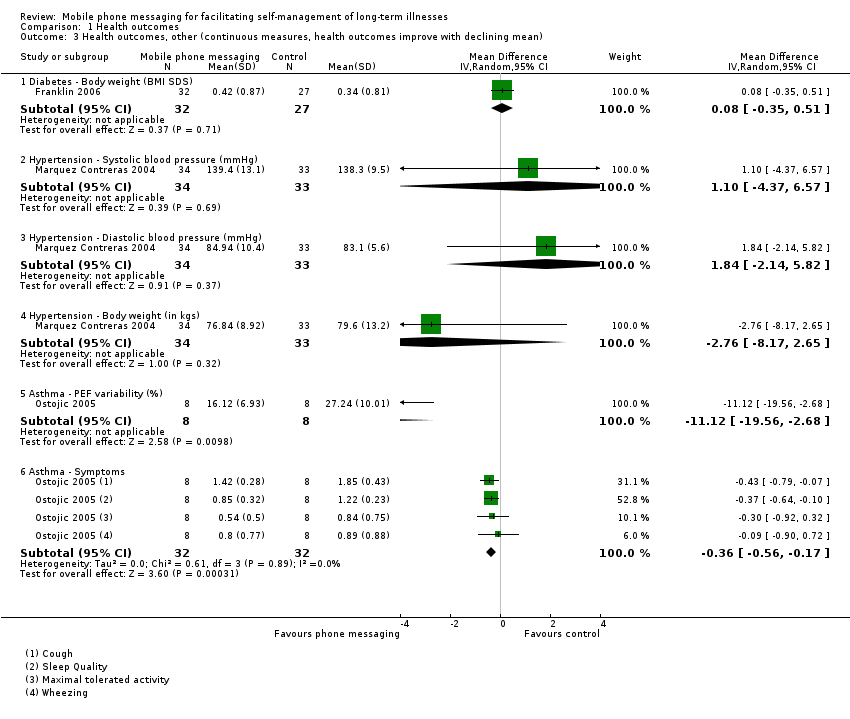Contenido relacionado
Revisiones y protocolos relacionados
Ipek Gurol‐Urganci, Thyra de Jongh, Vlasta Vodopivec‐Jamsek, Rifat Atun, Josip Car | 5 diciembre 2013
Pawel Posadzki, Nikolaos Mastellos, Rebecca Ryan, Laura H Gunn, Lambert M Felix, Yannis Pappas, Marie‐Pierre Gagnon, Steven A Julious, Liming Xiang, Brian Oldenburg, Josip Car | 14 diciembre 2016
Vlasta Vodopivec‐Jamsek, Thyra de Jongh, Ipek Gurol‐Urganci, Rifat Atun, Josip Car | 12 diciembre 2012
Angela Coulter, Vikki A Entwistle, Abi Eccles, Sara Ryan, Sasha Shepperd, Rafael Perera | 3 marzo 2015
Gill Foster, Stephanie JC Taylor, Sandra Eldridge, Jean Ramsay, Chris J Griffiths | 17 octubre 2007
Kamal R Mahtani, Carl J Heneghan, Paul P Glasziou, Rafael Perera | 7 septiembre 2011
Ipek Gurol‐Urganci, Thyra de Jongh, Vlasta Vodopivec‐Jamsek, Josip Car, Rifat Atun | 13 junio 2012
Melissa J Palmer, Nicholas Henschke, Hanna Bergman, Gemma Villanueva, Nicola Maayan, Tigest Tamrat, Garrett L Mehl, Claire Glenton, Simon Lewin, Marita S Fønhus, Caroline Free | 14 julio 2020
Clare Goyder, Helen Atherton, Mate Car, Carl J Heneghan, Josip Car | 20 febrero 2015
Elizabeth Murray, Joanne Burns, Sharon See Tai, Rosalind Lai, Irwin Nazareth | 19 octubre 2005










